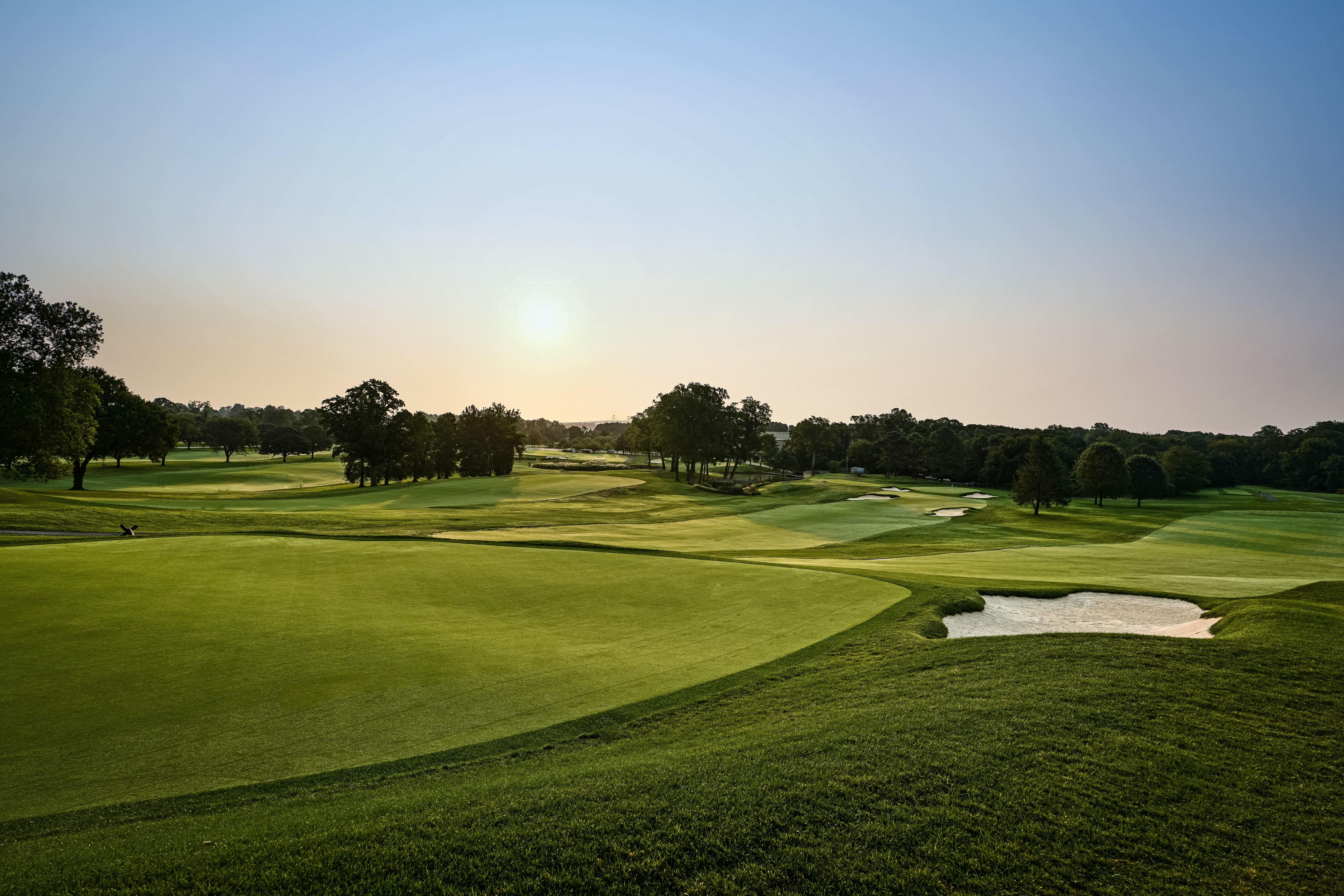Want to know more about course play?
View the Course Experience


Course History
1938
The Naval Academy golf course was realized in 1938, when the U. S. Navy purchased the surrounding land on Greenbury Point in order to expand their radio communications facility. The acquired land included the eighteen hole golf course developed in 1928 by the Greenbury Point Yacht and Country Club, but had become abandoned during the Great Depression.
1940-42
Over the next two years, the Navy restored nine of the eighteen original holes and in 1940, the Naval Academy Golf Club opened for play. In 1942, William Flynn was contracted to design and develop a course composed around the existing nine holes. Flynn’s selection was an ideal choice, given his uncanny ability to blend manufactured features with the natural landscape.
1944
After two years, Flynn’s redesigned Naval Academy course debuted in 1944. The finished course included eleven holes south of Greenbury Point Road and seven holes north of the main road, and incorporated the rolling terrain of inlets and surrounding tidal rivers of the Chesapeake Bay, along with views of the Bay Bridge in the distance.
1954
Further expansion of the radio facility eliminated two of the holes south of the road and two holes, the present numbers 13 and 14 were added. This completed the layout that exists today with the front nine south of the road and the back nine north of the road. Flynn’s design emphasized his strategy of “preferred line of play” in which the golfer is encouraged to place his shot with thought for advantage on the subsequent shot.
2017
A chipping and putting facility was introduced between the driving range and back nine holes. The ability to fine-tune technical short game skills offers a new dimension to the member experience at Navy Golf. Just across from the chipping and putting facility, stands the new Gurneé Sports Performance Center, which features a series of enclosed hitting bays will allow for year-round practice. State-of-the-art video equipment and swing analysis technology will provide Navy golfers with a competitive edge with their training.
2017
The Gurneé Performance Center was made possible by the innovative thinking and extreme generosity of Ted and Michelle Gurneé. Ted was a USNA Alumni, class of ‘61, and former squash and golf student-athlete. His Navy Golf teammate and close friend, Mike Moynahan ‘61, worked with Ted to design the Performance Center. The first hitting bay is dedicated to him. The short game area was provided through the generous donations of Ron Council and David Dorton ‘90.
2018
Beginning in 2018, and over the next several years, NAGA will commit to the renovation of Greenbury Point. We will begin the restoration of William Flynn's vision with a bunker refurbishment as Phase III and IV of our capital project. In Phase V, we will create a complete set of greens, restoring missing green space and providing sustainable surfaces for the future. We will protect the investment in new turf with an updated irrigation system in Phase VI, and enhance playability with new fairway turf in Phase VII. This lengthy and comprehensive undertaking represents the next chapter in the legacy of Navy Golf.